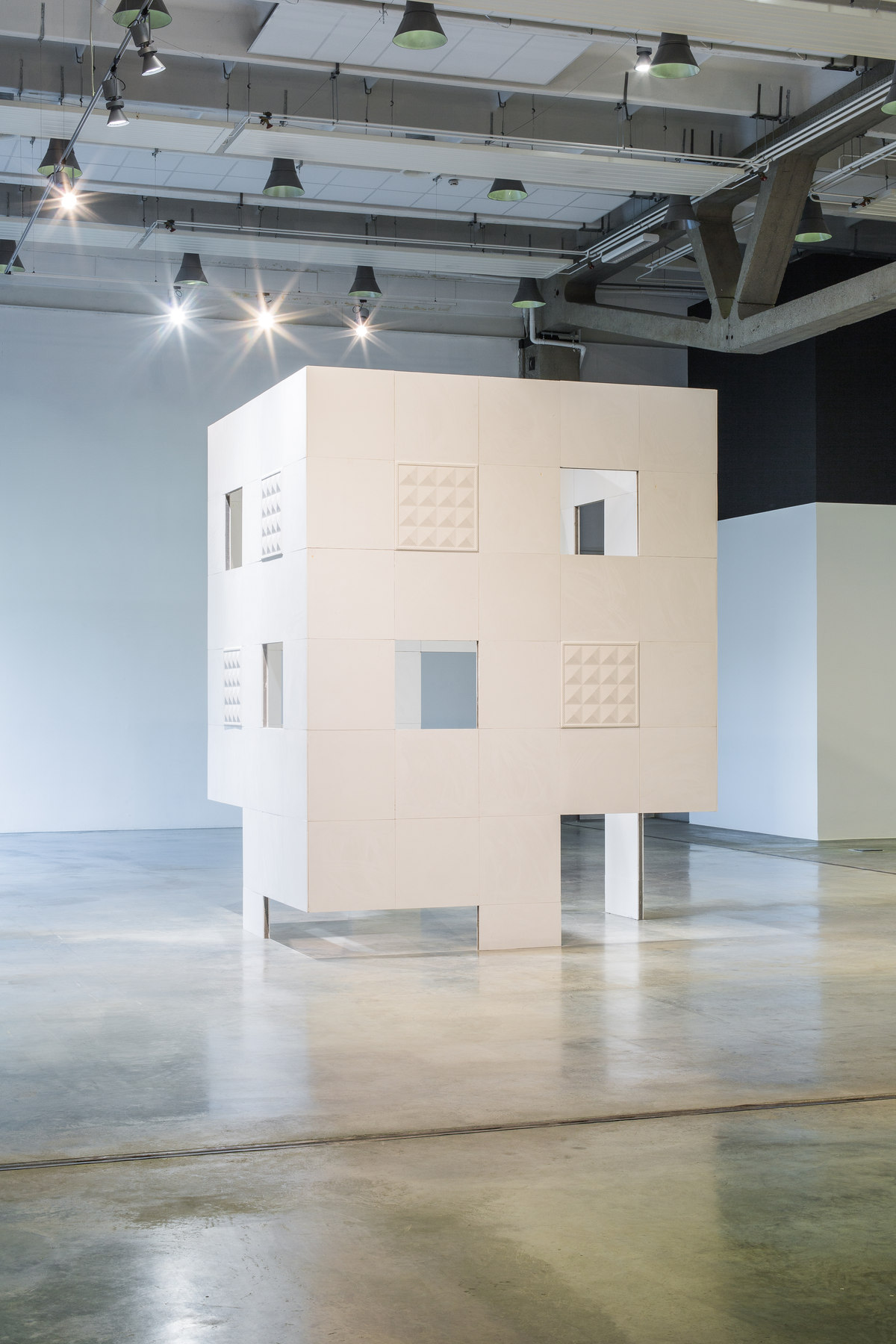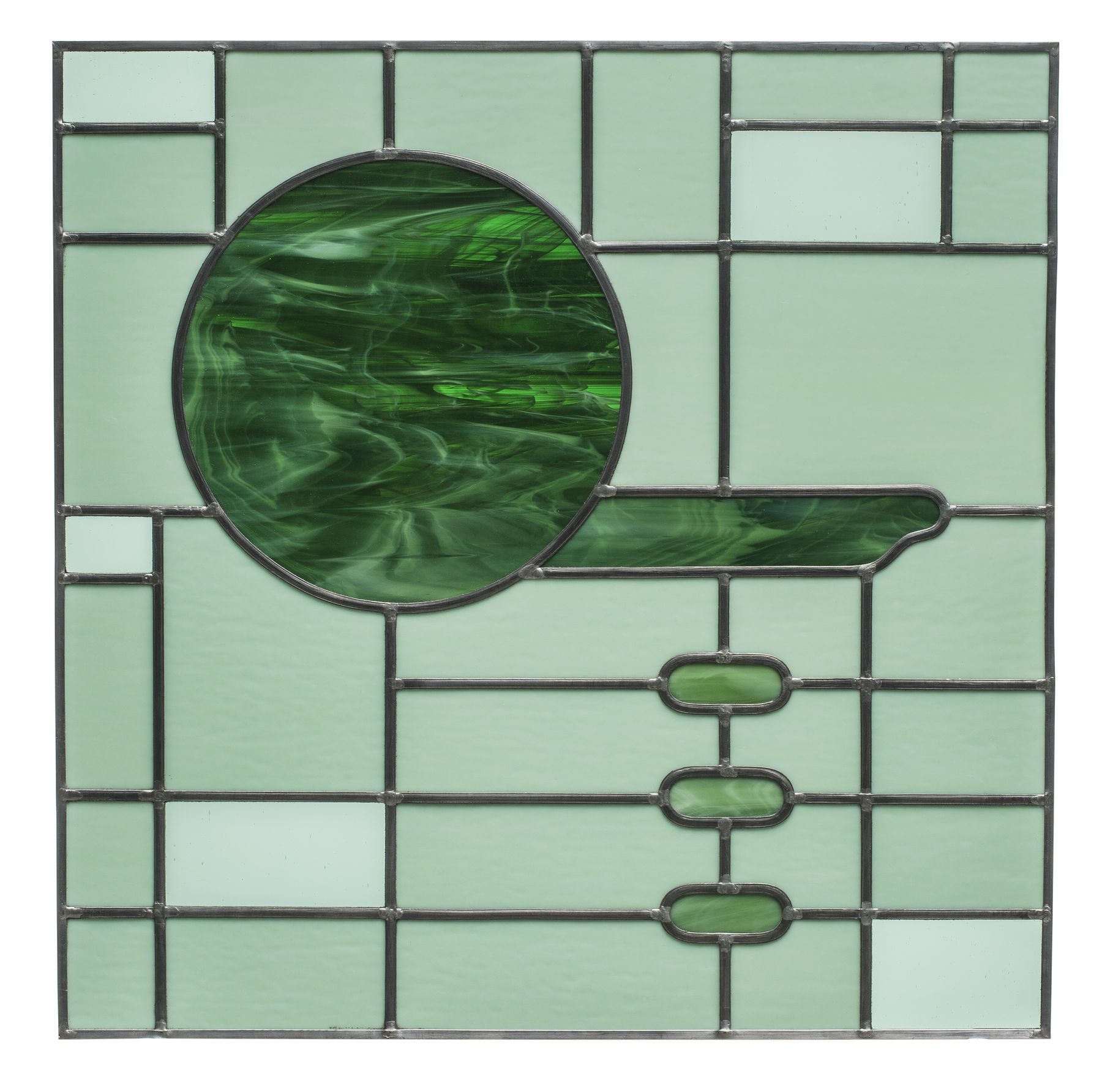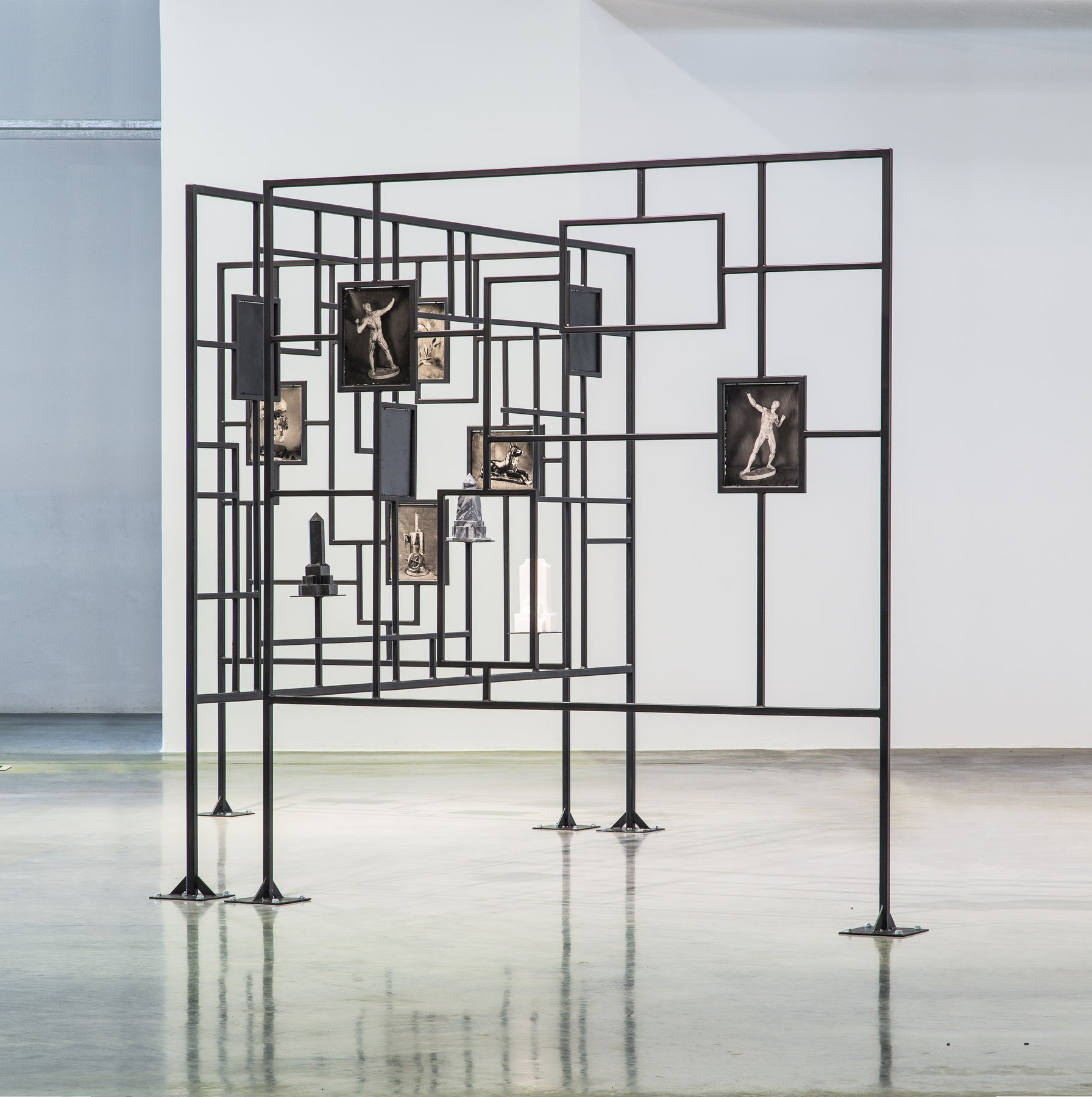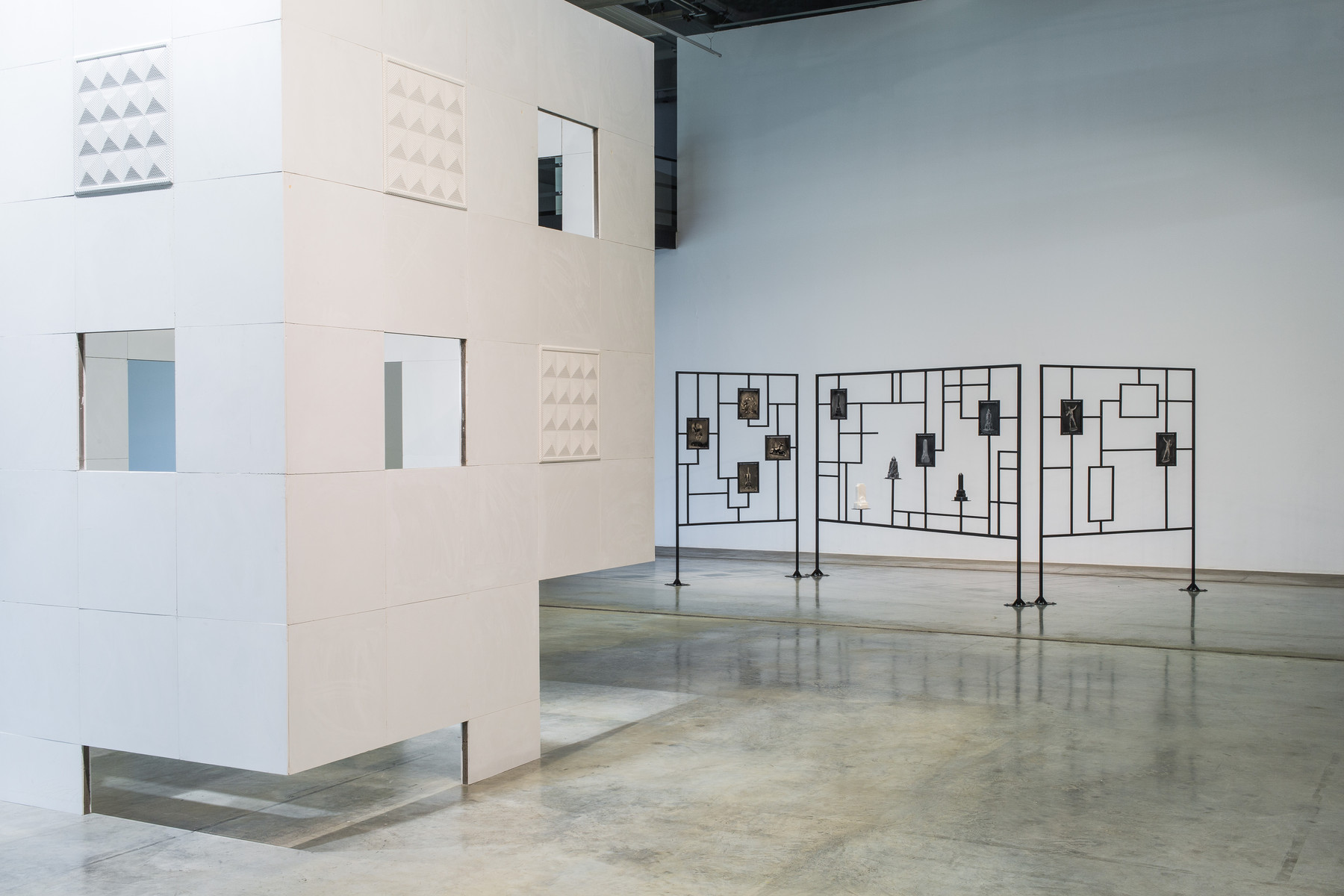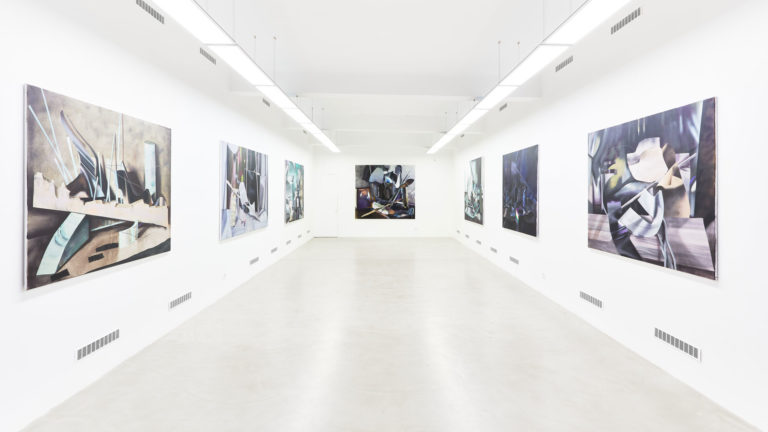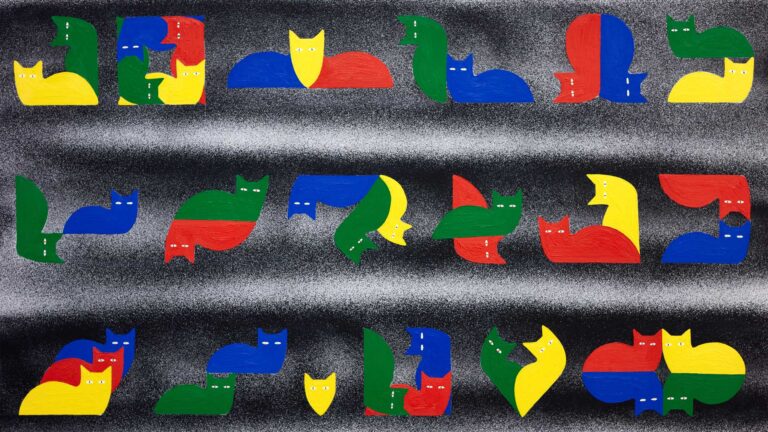Artist: Ádám Albert
Exhibition title: Melancholy of the Disconstructed Meaning
Venue: Art Gallery Paks, Paks, Hungary
Date: February 3 – April 2, 2017
Photography: all images copyright and courtesy of the artist and Art Gallery Paks
In his exhibition titled the Melancholy of the Disconstructed Meaning, Ádám Albert created an ensemble where he models the way in which objects with modified meaning and handicraft techniques become saturated with conceptual meaning. Installations constructed from handcrafted ready-made objects which have lost their function and new objects manufactured with the help of traditional techniques guide the viewers through the conceptual creative process: starting with the loss of function and meaning, through the building up of tarnish and value, to the adding of new meaning. Through the case studies of artworks, the transformation (construction, reconstruction and disconstruction) of meaning is displayed in the memory of these objects: the horse once used for royal representations becomes an anatomy lesson, the sensational revolutionary modernist technology becomes DIY raw material, the social-realist display cabinet becomes an item in a museum, and handcrafted objects become ornaments in middle-class homes.
Bertalan Székely, who studied at the Academy in Munich, became an instructor and later the director of the Royal Academy of Drawing in Pest (today the Hungarian University of Fine Arts) at the end of the 1870s. As a professor of anatomy, he laid great emphasis on studying the movement of horses, he bought a complete horse skeleton for the academy. Nevertheless, he also studied the contemporary revolutionary photos of motion by Eadweard Muybridge and corresponded with Étienne-Jules Marey. The instructional horse skeleton, which still exists today, poses the question why, apart from certain zoetrope experiments, it was essential for the students of the academy to study horse anatomy. In this decade, impressionists in Paris painted one of the ultimate symbols of industrial capitalism, train stations; at the same time, important historicising accessories of 19th century royal representation and the key to receiving state commissions ensuring secure income were still equestrian statues (Habsburg dynasty). Since reigning a horse was the allegory of good government, it played an important role in imperial representation. Bertalan Székely’s horse skeleton, in Ádám Albert’s artwork The Narcissism of Power (Bones of Buchephalus), stares into a three meter tall smoothly polished mirror-like onyx slab: the power symbol fit for art deco skyscrapers. The two onyx slabs are masons’ monuments of self-reflection, identification and mimetic/power representation.
The several metres high complex house-like building, the Library of Craftsmanship, is a kind of library metaphor. Its basic structure originates from a mathematically modelled and designed framework built from square modules. Its raw material is the “clever concrete” (officially, cellular construction method): one layer of concrete enclosed within two glassy gypsum sheets. The building faithfully follows the technology transmitted by Sámsondi Kiss’s workmen, which evolved into a masonry technique from an ingenious modernist invention. The exhibition constellation of the Melancholy of the Discinstructed Meaning focuses on the extra conceptual meaning of the raw material.
The surface displays the pyramidal grid print of late modernist neon light fixtures, and the stained-glass windows resembling abstract shapes, which were designed by the artist, are pseudo products of crafts reinterpreted in the conceptual space.
The two large installations are complemented by three metal frames (Folding screen I-III) welded from square sections. The geometric frame structures sectioned by battens, which recall the order of Adolf Loos’s geometric early modernism, display ambrotypes and marble objects. The ambrotypes, created using the classic process, display found objects, visual aids used for anatomy studies, and marble objects, creating a false, pseudo-vintage aesthetic milieu. The gypsum casts serving as visual aids at the academy and the blank miniature monuments made up of schematic geometric elements project the symbolic system of power representation to the illustrational framework of a conceptual “notice board”.
-Gábor Rieder


